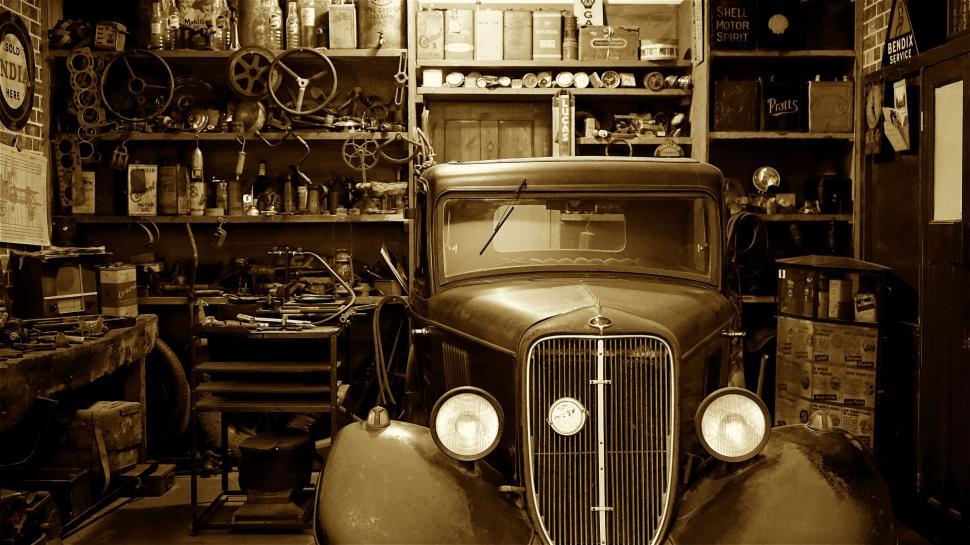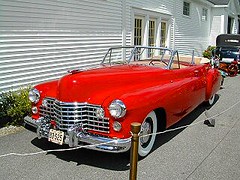
The 1980s were a decade of audacious design, technological innovation, and a vibrant shift in automotive culture. From groundbreaking sports cars that redefined performance to iconic grand tourers that symbolized luxury, the machines born in this era hold a special place in the hearts of enthusiasts. Today, many of these “Radwood era” classics, once perhaps overlooked, are experiencing a dramatic surge in value, transforming them from nostalgic relics into astute investments.
For collectors and astute investors, the classic car market is a dynamic landscape, and the 1980s represent a particularly fertile ground for appreciating assets. Cars that were once considered merely fun-to-drive or somewhat affordable imports are now commanding significant premiums, driven by a blend of rarity, performance heritage, pop culture influence, and a deep-seated desire among a new generation of collectors to own a piece of their past. This isn’t just about sentimentality; it’s about smart market trends.
We’re not just talking about minor fluctuations. We’re witnessing explosive growth in value for a select group of vehicles from the ’80s, making them highly coveted. As the classic car market continues to mature, understanding which models are truly on an upward trajectory is paramount for anyone looking to enter or expand their collection. Join us as we explore 13 classic cars from the 1980s whose values are skyrocketing, starting with seven absolute standouts.
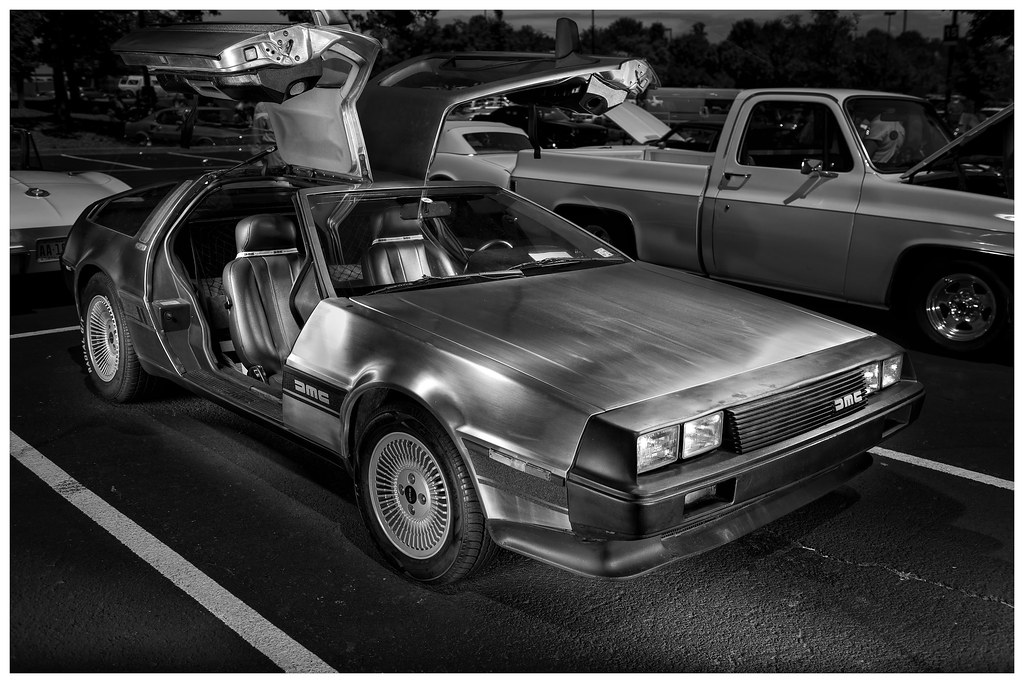
1. **DeLorean DMC-12**: The DeLorean DMC-12, a car that needs little introduction thanks to its star turn in “Back To The Future,” possesses an undeniable character that has cemented its status as a cultural icon. Despite its short production run from 1981 to 1982 and the company being “mired in issues,” the DMC-12 has captivated imaginations with its distinctive gull-wing doors and unpainted stainless-steel body. It embodies a futuristic vision of the past that continues to resonate today.
Mechanically, the DMC-12 faced criticism, with many arguing that it was “one of the most style-over-substance car, built to look fast rather than to go fast.” Its reliability was also a point of contention, even famously “locking a celebrated late-night host, Johnny Carson, inside on the very first night he owned it.” Yet, these quirks have only added to its legend, making it an endlessly fascinating piece of automotive history.
Despite its initial challenges, the DMC-12’s market performance has been remarkable. It is “reported to have increased in value by approximately 74% since 2019, with some selling for around $75,000.” Provenance plays a significant role, as evidenced by “The Carson DeLorean sold for $110,000 at auction in 2021.” While “More recent auctions have fetched anywhere between $40,000 and $70,000,” its sustained appreciation makes it a standout investment.
Furthermore, the car’s enduring pop culture presence ensures its collectibility. “Back To The Future” DeLorean replicas “have gone for higher, with one selling for $132,000 earlier this year.” This unique blend of cinematic fame, distinctive design, and limited production ensures the DMC-12 continues its journey as a highly sought-after, appreciating classic.
Car Model Information: 1982 Delorean DMC-12
Name: DMC DeLorean
Alt: 1983 DeLorean
Caption: 1983 DeLorean
Manufacturer: DeLorean Motor Company
Production: January 21, 1981 – December 1982
ModelYears: 1981–1983
Assembly: Dunmurry
Designer: Giorgetto Giugiaro
Class: Sports car
BodyStyle: coupé
Layout: Rear-engine, rear-wheel-drive layout
Doors: Gull-wing doors
Engine: 2.85 L
Abbr: on
Powerout: 130 hp
Transmission: 5-speed manual ,3-speed automatic
Wheelbase: 2413 mm
Length: 4267 mm
Width: 1988 mm
Height: 1140 mm
Weight: 1233 kg
Sp: us
Categories: 1980s cars, All Wikipedia articles written in American English, Articles with short description, Automobiles with backbone chassis, Automobiles with gull-wing doors
Summary: The DMC DeLorean is a rear-engine, two-seat sports car manufactured and marketed by John DeLorean’s DeLorean Motor Company (DMC) for the American market from 1981 until 1983—ultimately the only car brought to market by the fledgling company. The DeLorean is sometimes referred to by its internal DMC pre-production designation, DMC-12, although this was not used in sales or marketing materials for the production model.
Designed by Giorgetto Giugiaro, the DeLorean is noted for its gull-wing doors and brushed stainless-steel outer body panels, as well as its lack of power and performance. Though its production was short-lived, the DeLorean became widely known after it was featured as the time machine in the Back to the Future films.
With the first production car completed on January 21, 1981, the design incorporated numerous minor revisions to the hood, wheels and interior before production ended in late December 1982, shortly after DMC filed for bankruptcy and after total production reached an estimated 9,000 units.
Despite the car having a reputation for poor build quality and an unsatisfactory driving experience, the DeLorean continues to have a strong following, driven in part by the popularity of Back to the Future. 6,500 DeLoreans were estimated to still be on the road as of 2015.
Get more information about: DMC DeLorean
Buying a high-performing used car >>>
Brand: DeLorean Model: DMC-12
Price: $129,950 Mileage: 3,145 mi.
Read more about: The Costly Truth: 14 Classic Cars That Are Simply Not Worth Restoring for the Savvy Enthusiast
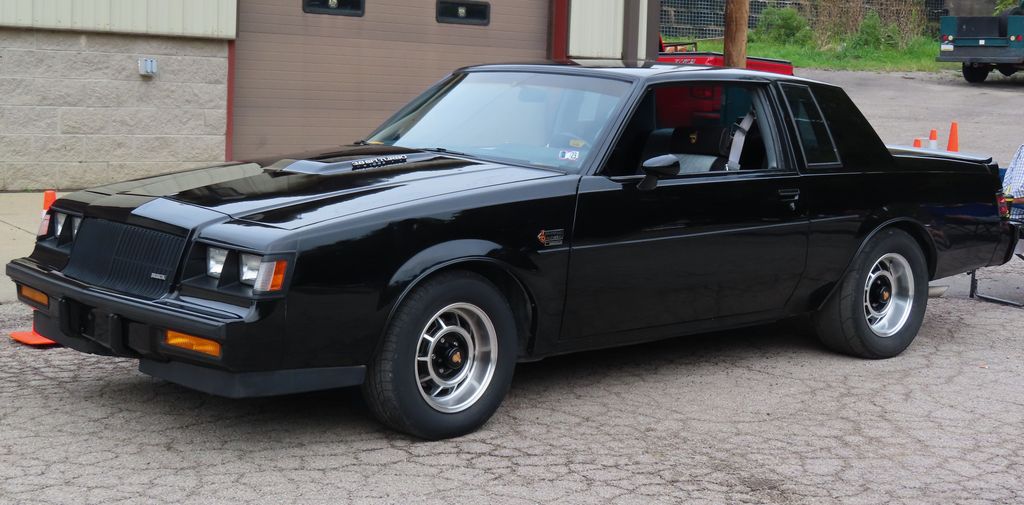
2. **Buick GNX**: For enthusiasts of American muscle with a stealthy demeanor, the Buick GNX stands as an undeniable powerhouse from the 1980s. This car was a muscle machine that “packed quite a punch and stood apart from the plain ol’ Buick Regal that it was based on.” Built in 1987, it was Buick’s “royal send off” for the final year of the second-generation Regal’s production, and what a send-off it was.
Under its “sinister-looking hood” lay a formidable “3.8-liter turbo V6” engine. This powerplant generated a robust “276 horsepower and 360 lb-ft of torque,” propelling the GNX from “zero-to-60 mph in just 4.6 seconds.” Such performance was groundbreaking for its time, solidifying its reputation as a true performance leader and a car that could genuinely outrun many contemporary sports cars.
The GNX’s allure is further amplified by its extreme rarity; it was produced in a “limited run of 547 units.” This exclusivity, combined with its “unique status at the time,” has fueled a rapid appreciation in its market value. Its journey from an original price of “$29,900 in 1987” to its current status as a highly valuable collectible is nothing short of incredible.
Indeed, the GNX has “only grown in value on the used car market,” with “the average price in recent years hovering around an incredible $180,000.” This represents a significant leap from “around $120,000” in 2021, and by 2025, values “had surpassed the $170,000 mark.” Some exceptional examples have even “crossed the quarter-million mark, with one selling at a recent auction for $255,000,” making the Buick GNX a truly golden investment.
Read more about: Remember These Rides? 14 Legendary Cars We’re Seriously Begging Automakers to Bring Back from Retirement
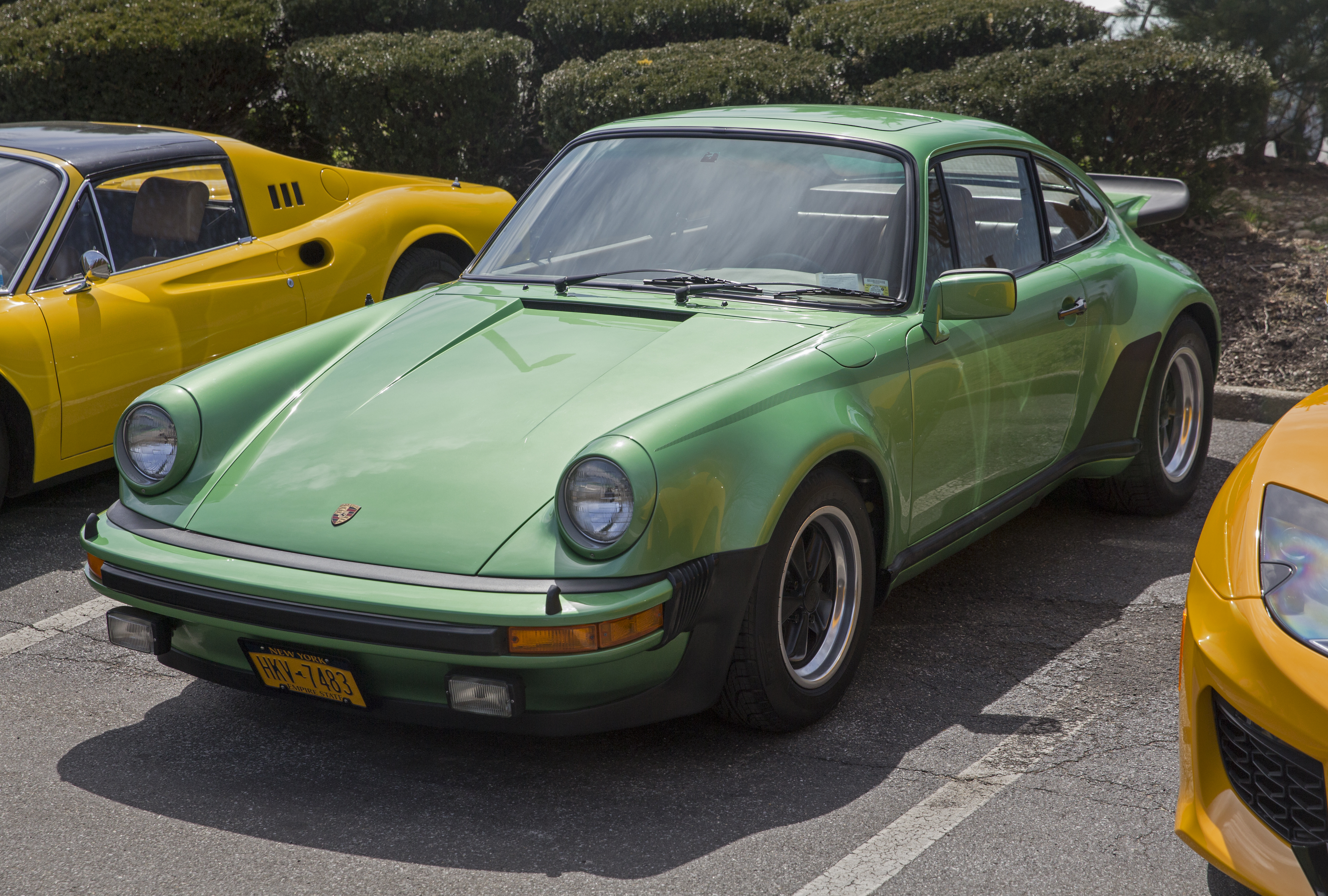
3. **Porsche 911 Turbo (930)**: The Porsche 911 Turbo, specifically the 930 generation, is a quintessential 1980s performance icon whose value continues its relentless ascent. The context rightly notes that “Air-cooled Porsches are all the rage,” largely due to their raw driving experience and the skilled work of “restomod gurus like Singer,” which has significantly boosted demand for models of that vintage. The 930 is at the forefront of this appreciation.
This model earned its infamous “widowmaker” nickname for its demanding nature, being “extremely fast and unforgiving.” Initially featuring a “3.0-liter engine,” Porsche later refined it in the ’80s with a “3.3-liter engine,” which produced a formidable “282 horsepower” while weighing “just over 3,000 pounds.” This combination of potent power and challenging dynamics created a legend that enthusiasts still revere.
Whether it’s the “regular 930 3.3 or the polarizing slant nose design,” the car demonstrates consistent appreciation. The “coupe’s average selling price was around $120,000 in 2021 and now stands just over $150,000.” The Cabriolet variant has also seen a substantial rise, going “from an average of about $90,000 to just over $154,000,” indicating broad market strength across body styles.
Rarity further fuels the 930’s appeal. The “Targa version is the rarest of the regular 930, with only 297 produced,” and its price has “surged, with one selling for over $220,000 earlier this year.” Even the unique “slant nose, meanwhile, has exploded in value despite its unusual, racing-inspired front end, with the average selling price of the coupe and cabriolet far exceeding the $200,000 mark in recent years.” The 930 is not merely a car; it’s a blue-chip automotive investment.
Car Model Information: 2024 Volvo XC90 B6 Ultimate Bright Theme 6-Seater
Name: Porsche 911
Caption: The 1 millionth 911 produced on display at Volkswagen Group Forum, Berlin
Designer: Ferdinand Alexander Porsche
Manufacturer: Porsche
Production: September 1964 – present
Assembly: Stuttgart,Baden-Württemberg
Class: Sports car
BodyStyle: unbulleted list
Related: unbulleted list
Layout: Rear-engine design,rear-wheel drive
Predecessor: Porsche 356
Categories: 1970s cars, 1980s cars, 1990s cars, 2+2 coupés, 2000s cars
Summary: The Porsche 911 model series (pronounced Nine Eleven or in German: Neunhundertelf, or colloquially Neunelfer) is a family of two-door, high performance rear-engine sports cars, introduced in September 1964 by Porsche of Stuttgart, Germany, and now in its eighth generation. All 911s have a rear-mounted flat-six engine, and usually 2+2 seating, except for special 2-seater variants. Originally, 911s had air-cooled engines, and torsion bar suspension, but the 911 has been continuously enhanced, and evolved across generations. Though the 911 core concept has remained largely unchanged, water-cooled engines were introduced with the 996 series in 1998, and front and rear suspension have been replaced by Porsche-specific MacPherson suspension up front, and independent multi-link rear suspension.
The 911 has been raced extensively by private and factory teams, in a variety of classes. It is among the most successful competition cars. In the mid-1970s, the naturally aspirated 911 Carrera RSR won world championship races including Targa Florio and the 24 Hours of Daytona. The 911-derived 935 turbo also won the 24 Hours of Le Mans in 1979. Porsche won the World Championship for Makes in 1976, 1977, 1978, and 1979 with 911-derived models.
In a 1999 poll to determine the Car of the Century, the 911 ranked fifth — one of two in the top five that had remained continuously in production (the original Beetle remained in production until 2003). The one millionth example was manufactured in May 2017 and is in the company’s permanent collection.
Get more information about: Porsche 911
Buying a high-performing used car >>>
Brand: Porsche Model: 911 Turbo
Price: $51,649 Mileage: 13,060 mi.
Read more about: Beyond the Laughs: A Connoisseur’s Journey Through Jerry Seinfeld’s Exclusive Collection of Iconic Porsches
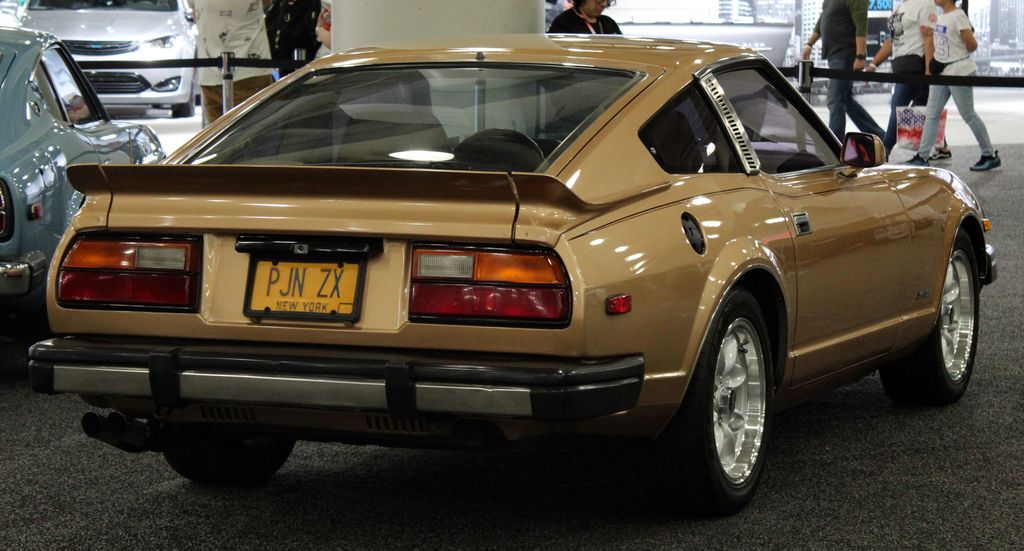
4. **Datsun 280ZX**: For those seeking a sportier, lighter, and historically significant Japanese classic from the early 1980s, the Datsun/Nissan 280ZX presents an increasingly compelling investment opportunity. Succeeding the beloved 240/280Z, the 280ZX, produced “between 1979 and 1983,” has emerged as a highly sought-after model, demonstrating remarkable market growth despite its predecessor’s slightly different trajectory.
The 280ZX was powered by a “2.8-liter inline six engine,” initially offered in a naturally aspirated form that produced a “modest 135 horsepower.” However, Datsun enhanced its appeal significantly by adding a turbocharger, “pushing output to 180 horsepower.” This boosted version could sprint from “zero-to-60 mph in 7.4 seconds,” and coupled with an “upgraded suspension,” it delivered a genuinely “fun-to-drive car for its time.”
Market data underscores the 280ZX’s rapid appreciation. “Reports suggest that prices of the Japanese car have grown by 130% since 2019 and are expected to rise even further.” This exponential growth places it firmly in the category of skyrocketing classics. The desirability of the turbocharged variants is particularly high, with “pristine cars selling for as much as $41,500,” while naturally aspirated versions have also “fetched up to $30,000 in the past year.”
Adding to its collectibility, Datsun released a “10th Anniversary Edition in 1980, featuring a special gold and black theme, limited to just 2,500 units.” One such example “sold for an impressive $47,500 this year,” highlighting the premium placed on rare editions. Furthermore, the “280ZX also boasts a notable racing heritage, having competed in both SCCA and IMSA events, with Paul Newman himself behind the wheel,” cementing its place in motorsports history and boosting its appeal.
Car Model Information: 1980 Datsun 280ZX 10TH ANNIVERSARY
Name: Nissan S130
Aka: Datsun 280ZX,Nissan Fairlady Z
Caption: 1982 Datsun 280ZX 2+2 (Europe)
Class: Sports car
Manufacturer: Nissan
BodyStyle: fastback
Production: June 1978–1983
Layout: Front-engine, rear-wheel-drive layout
Assembly: ubl
Engine: Nissan L engine#L20,Straight-six engine
Transmission: Borg-Warner,Borg-Warner T-5 transmission
Predecessor: Nissan Fairlady Z (S30)
Successor: Nissan 300ZX#Z31
Weight: cvt
Wheelbase: cvt
Length: cvt
Width: cvt
Height: cvt
Categories: 1980s cars, All articles needing additional references, All articles with unsourced statements, Articles needing additional references from May 2018, Articles with short description
Summary: The Nissan S130 is a sports coupé produced by Nissan in Japan from 1978 until 1983. It was sold as the Datsun 280ZX, Nissan Fairlady Z and Nissan Fairlady 280Z, depending on the market. In Japan, it was exclusive to Nissan Bluebird Store locations. It was the second generation Z-car, replacing the Nissan Fairlady Z (S30) in late 1978. The 280ZX was the first time the “by Nissan” subscript was badged alongside the Datsun logo, along with Nissan trucks. The 280ZX was Motor Trend’s import car of the year for 1979. The 280ZX was replaced by the Nissan 300ZX in 1984.
Get more information about: Nissan Fairlady Z (S130)
Buying a high-performing used car >>>
Brand: Datsun Model: 280ZX
Price: $69,980 Mileage: 17,351 mi.
Read more about: 12 Legendary Automotive Rivalries That Revolutionized the Roads and Fueled Innovation
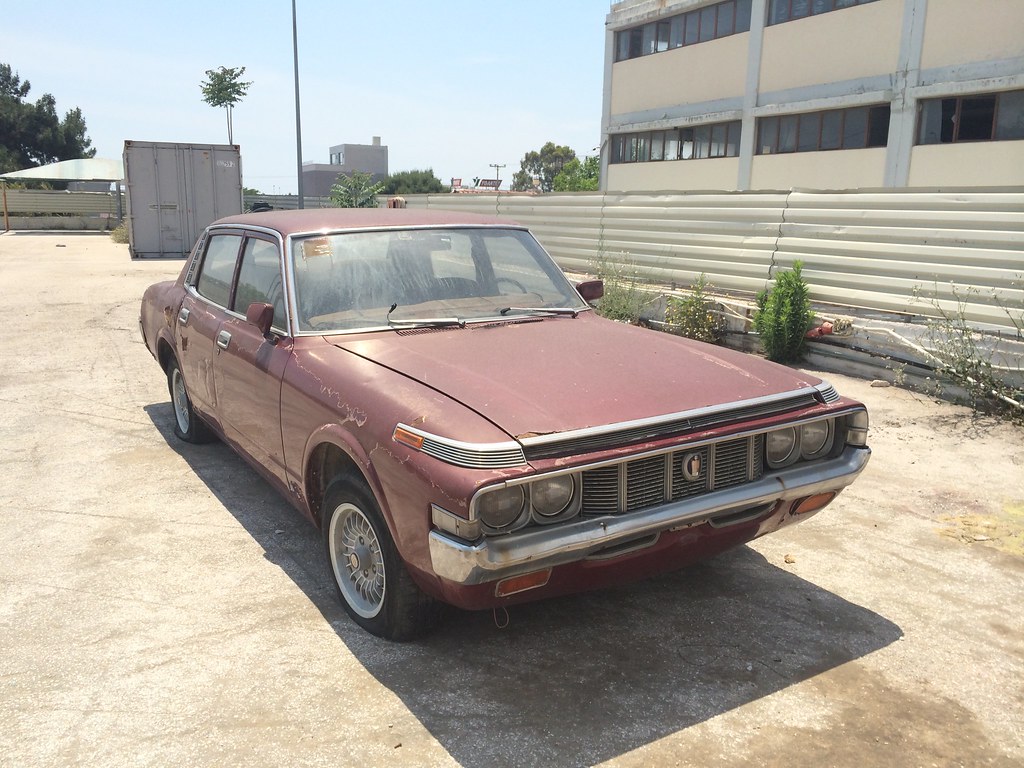
5. **Toyota MR2 (First-gen)**: The Toyota MR2, particularly its first generation produced “between 1984 and 1989,” stands as a vibrant testament to 1980s Japanese sports car innovation and has become a hot commodity in the classic market. Its “mid-engine, two-seat, rear-wheel-drive layout screams fun,” immediately signaling its driver-focused philosophy and setting it apart from many contemporaries. This unique configuration, combined with its precise engineering, makes it a truly engaging machine.
Initially, the MR2 was equipped with a “1.6-liter engine producing just 112 horsepower,” allowing it to achieve a “zero-to-60 mph time in 8.4 seconds.” While not a straight-line king, its true genius lay in its handling. A few years later, “power was increased with the addition of a supercharger, boosting output to 145 horsepower and reducing the zero-to-60 mph time to around seven seconds,” enhancing its performance credentials.
The MR2’s core appeal, however, “wasn’t about going fast in a straight line as its focus was on getting through corners at pace.” This was achieved “thanks to tuning from Lotus engineer, Roger Becker,” who imbued the car with exceptional balance and agility. This dedication to handling prowess is a key factor in its enduring popularity among driving enthusiasts who appreciate a pure, analog experience.
The market has certainly recognized the MR2’s qualities, as its “value has continued to rise,” a trend that has been “bemoaned about on various forums” by those who wish they had bought one sooner. “The supercharged versions of the first-generation MR2 have sold for between $15,000 and $25,000 this year,” with “the 1988 model year… appearing to have the highest average price in recent years, at around $16,000.” This steady climb indicates a strong and sustained demand.
Car Model Information: 1993 Toyota MR2 Turbo
Name: Toyota MR2
Caption: Second generation MR2
Manufacturer: Central Motors
Aka: Toyota MR (France and Belgium)
Production: 1984–2007
Assembly: Sagamihara, Kanagawa
Class: Sports car
Layout: Rear mid-engine, rear-wheel-drive layout
ModelYears: 1985–2007
Categories: 1990s cars, 2000s cars, All Wikipedia articles written in American English, All articles containing potentially dated statements, All articles needing additional references
Summary: The Toyota MR2 is a two-seater sports car which was manufactured and marketed by Toyota from 1984 until 2007 over three generations. It was the first Japanese rear-mid-engine, rear-wheel-drive production car and was sold around the world. The first generation (W10) was produced from 1984 to 1989, the second generation (W20) from 1989 to 1999, and the third generation (W30) from 1999 to 2007.
Conceived as a small, economical and sporty car, the MR2 features a straight-four engine, transversely mounted in front of the rear axle, four-wheel disc brakes, and fully independent coilover suspension with MacPherson struts on each wheel.
The name MR2 stands for either “mid-ship run-about 2-seater” or “mid-engine, rear-wheel-drive, 2-seater”. In French-speaking markets, the vehicle was renamed Toyota MR because the abbreviation “MR2” sounds like the profanity “merdeux” when spoken in French.
Get more information about: Toyota MR2
Buying a high-performing used car >>>
Brand: Toyota Model: MR2
Price: $21,499 Mileage: 145,631 mi.
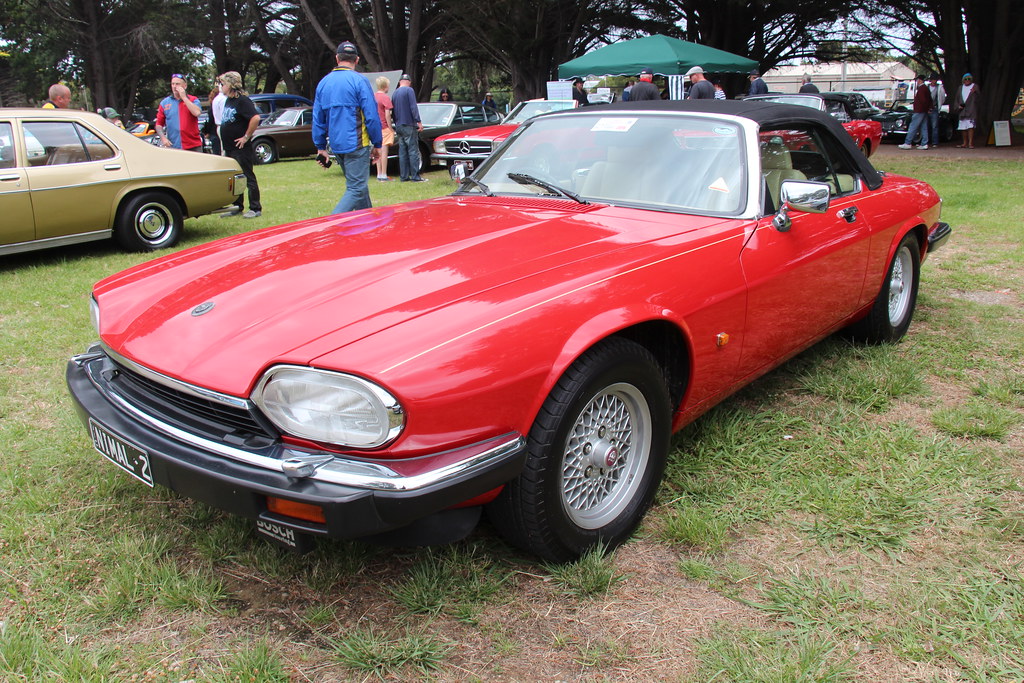
6. **Jaguar XJ-S**: The Jaguar XJ-S, a grand tourer with a remarkable production span, represents a sophisticated slice of 1980s luxury and performance that is now experiencing a significant re-evaluation in the classic car market. As “one of the longest-produced grand tourers,” its enduring presence is a testament to its fundamental appeal and the timelessness of its design. For decades, it offered a distinct alternative to its more aggressive sports car rivals.
At its heart, the XJ-S was defined by its “sleek styling and V-12 engine,” which together created “a refined, luxurious vehicle for its time.” This combination made it a statement of understated elegance and effortless power, perfectly suited for long-distance cruising. The smooth, potent V-12 provided a driving experience unlike anything else on the road, embodying a particular era of British automotive grandeur.
For a period, the XJ-S was “once seen as affordable,” making it an accessible entry point into luxury classic car ownership. However, its tide has demonstrably turned, as “the XJ-S is now appreciating in value as more enthusiasts recognize its sophistication and understated beauty.” This appreciation reflects a growing understanding of its engineering integrity and its unique position in Jaguar’s storied history.
Collectors are increasingly drawn to its blend of comfort, style, and twelve-cylinder engine, realizing its potential as an investment. Its sophisticated allure, combined with its distinct 1980s aesthetic, ensures that well-maintained examples are becoming increasingly sought-after. The XJ-S offers a compelling proposition for those looking to invest in a classic that combines luxury heritage with strong market growth.
Car Model Information: 2012 Jaguar XJ Base
Name: Jaguar XJ-S,Jaguar XJS
Manufacturer: Jaguar Cars
ModelCode: XJ27
Production: 1975–1996
Class: Grand tourer
Predecessor: Jaguar E-Type
Designer: Malcolm Sayer
Successor: Jaguar XK (X100)
Layout: Front-engine, rear-wheel-drive layout
Assembly: Coventry,England
Categories: 1980s cars, 1990s cars, 2+2 coupés, All Wikipedia articles written in British English, All articles needing additional references
Summary: The Jaguar XJ-S (later called XJS) is a luxury grand tourer manufactured and marketed by British car manufacturer Jaguar Cars from 1975 to 1996, in coupé, fixed-profile and full convertible bodystyles. There were three distinct iterations, with a final production total of 115,413 units over 20 years and seven months.
Originally developed by Chief Engineer William Heynes using the platform of the then-current XJ saloon, the XJ-S was noted for its prominent rear buttresses. The early styling was partially by Jaguar’s aerodynamicist Malcolm Sayer—one of the first designers to apply advanced aero principles to cars—however Sayer died in 1970, before the design was finalised.
Its final iteration, produced from 1991 to 1996, was manufactured after Jaguar was acquired by Ford, who introduced numerous modifications – and eliminated the hyphen in the name, marketing Jaguar’s longest running model simply as the XJS.
Get more information about: Jaguar XJS
Buying a high-performing used car >>>
Brand: Jaguar Model: XJ-S
Price: $24,498 Mileage: 13,483 mi.
Read more about: Beyond the Hype: 14 Underrated Sports Cars Every Enthusiast Should Discover
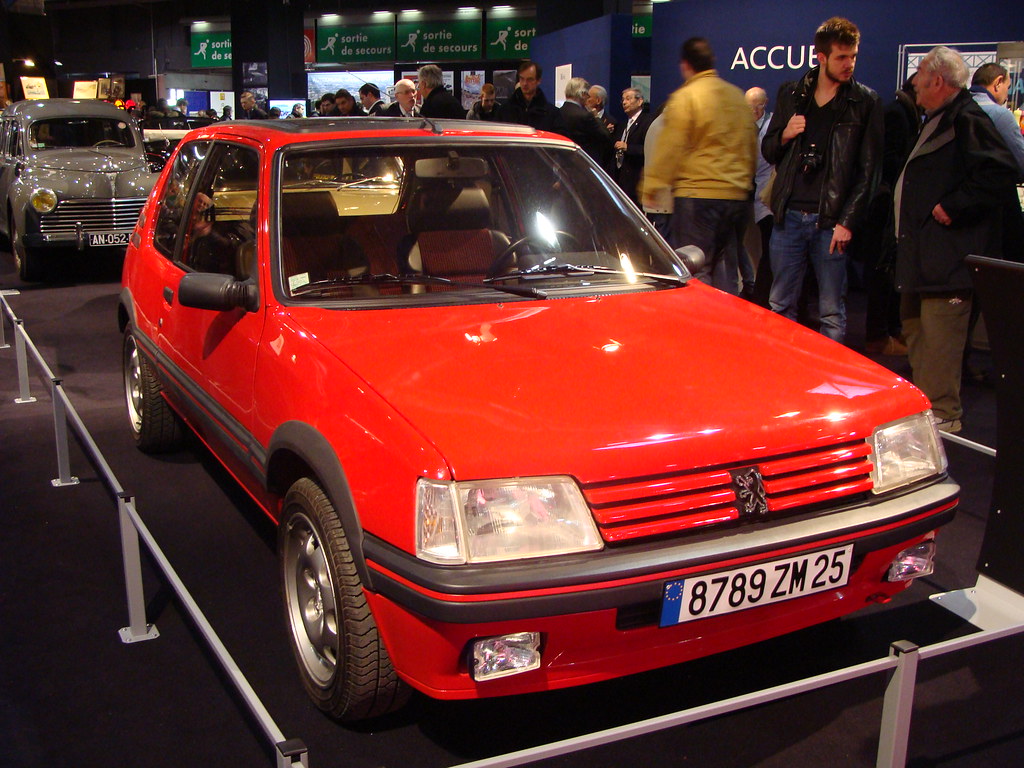
7. **Peugeot 205 GTI**: The Peugeot 205 GTI holds an almost mythical status among hot hatch enthusiasts globally, a true icon of the 1980s that, despite “may not have been sold in America,” made an “impact on the global automotive scene” that is “undeniable.” This compact, agile machine redefined what a small car could achieve in terms of performance and driving engagement, setting a benchmark for future pocket rockets.
As a “trailblazer,” the 205 GTI offered “impressive performance and handling” in a lightweight and nimble package. Its sharp steering, responsive engine, and perfectly balanced chassis made it an absolute joy to drive, capable of carving up winding roads with an enthusiasm rarely seen in its class. This driving purity is a key element of its enduring appeal and why it’s celebrated by drivers worldwide.
Over time, this legendary status has translated into significant market demand. “As time passes, the 205 GTI has become a coveted import,” with “collectors scrambling to find these rare and iconic cars.” The scarcity of clean examples, especially in markets where it was never officially sold, only amplifies its desirability and pushes values higher.
Its simple yet effective engineering, combined with its profound influence on the hot hatch genre, ensures its place as an appreciating classic. For enthusiasts who understand the legacy of truly great driver’s cars, the 205 GTI represents not just a piece of automotive history, but a smart investment that continues to climb in value as its legend grows.
Car Model Information: 2024 Volvo XC90 B6 Ultimate Bright Theme 6-Seater
Name: Peugeot 205
Caption: 5-door
Manufacturer: Peugeot
Production: 1983–1999
Assembly: Mulhouse,Cerizay,Madrid,Los Andes, Chile,Changhua,Tehran,Sopriam
Designer: Gerard Welter,Pininfarina
Class: Supermini
BodyStyle: hatchback,convertible,panel van
Related: Peugeot 309
Layout: Front-engine, front-wheel-drive layout,Mid-engine, four-wheel-drive layout
Engine: ubl
Transmission: Automatic transmission,4/5-speed manual
Wheelbase: 2420 mm
Abbr: on (Cabriolet)
Length: 3705 mm
Width: convert,1589 mm
Height: convert,1354 mm
Weight: convert
Predecessor: Peugeot 104,Talbot Samba,Peugeot 204
Successor: Peugeot 106,Peugeot 206
Platform: PSA PF2 platform
Categories: 1990s cars, All-wheel-drive vehicles, All articles with unsourced statements, Articles with short description, Articles with unsourced statements from April 2011
Summary: The Peugeot 205 is a four-passenger, front-engine, supermini (B-segment) car manufactured and marketed by Peugeot over a sixteen-year production run from 1983 to 1999, over a single generation. Developed from Projet M24 and introduced on 25 February 1983, the 205 replaced the Peugeot 104 and the Talbot Samba, using major elements from their design. It won What Car?’s Car of the Year for 1984. It was also declared “car of the decade” by CAR Magazine in 1990. Peugeot stopped marketing the 205 in 1999 in favor of its new front-engined 206. The 106, which was introduced in 1991, effectively took over as Peugeot’s smaller front-engined model in their lineup. The latter was developed as a close sibling of the Citroën AX, sharing many components and a platform that later evolved into the Citroën Saxo.
Get more information about: Peugeot 205
Buying a high-performing used car >>>
Brand: Peugeot Model: 205 GTI
Price: $51,649 Mileage: 13,060 mi.
Read more about: Kings of the Asphalt: Reliving the Glory Days of 1980s Sports Cars and Supercars That Defined a Generation

8. **BMW M3 (E30)**: The first-generation BMW M3, specifically the E30, stands as an automotive legend, transitioning from an affordable and fun-to-drive import to a highly coveted classic. Built for racing homologation, its profound impact on the car world is undeniable, offering an exceptional blend of track-bred performance and surprising usability for everyday driving. This iconic machine helped solidify BMW’s reputation for engineering prowess, setting a benchmark for sports sedans.
At its core, the E30 M3’s exceptional driving dynamics are what truly set it apart. Its lightweight chassis, perfectly balanced suspension, and high-revving four-cylinder engine provided a driving experience that was both thrilling and remarkably precise. These characteristics made it a formidable competitor on the race track, yet also a joy to pilot on winding back roads or through city streets, showcasing BMW’s unwavering commitment to the ultimate driving machine.
Once underestimated by some, its value has since risen substantially, a testament to its enduring appeal and significant place in automotive history. Collectors worldwide have recognized the E30 M3’s unique blend of performance, rarity, and iconic styling, driving prices skyward. Indeed, the value of these cars has “gone through the roof in recent years,” making it one of BMW’s most collectable models and a cornerstone for any serious collection.
The demand for clean, well-maintained E30 M3s continues to escalate, fueled by a new generation of enthusiasts and long-time collectors who appreciate its analog driving purity. This car is not just a classic; it’s a blue-chip investment that continues to accelerate in value, cementing its status as a sought-after classic quickly gaining recognition. Its performance heritage and inherent rarity ensure its position as a highly desirable acquisition for years to come.
Car Model Information: 2017 BMW M3 Base
Name: BMW M3
Caption: 2021 BMW M3 Competition (G80)
Manufacturer: BMW M
Production: unbulleted list
Class: Compact executive car
Layout: unbulleted list
Related: unbulleted list
Categories: 1990s cars, 2000s cars, 2010s cars, 2020s cars, All Wikipedia articles written in British English
Summary: The BMW M3 is a high-performance version of the BMW 3 Series, developed by BMW’s in-house motorsport division, BMW M GmbH. M3 models have been produced for every generation of 3 Series since the E30 M3 was introduced in 1986.
The initial model was available in a coupé body style, with a convertible body style made available soon after. M3 saloons were offered initially during the E36 (1994–1999) and E90 (2008–2012) generations. Since 2014, the coupé and convertible models have been rebranded as the 4 Series range, making the high-performance variant the M4. Variants of the 3 Series since then have seen the M3 produced as a saloon, until 2020, when the M3 was produced as an estate (Touring) for the first time, alongside the saloon variant.
Get more information about: BMW M3
Buying a high-performing used car >>>
Brand: BMW Model: M3
Price: $37,999 Mileage: 81,114 mi.
Read more about: Hollywood’s Need for Speed: Unpacking Tom Cruise’s Epic Supercar Collection
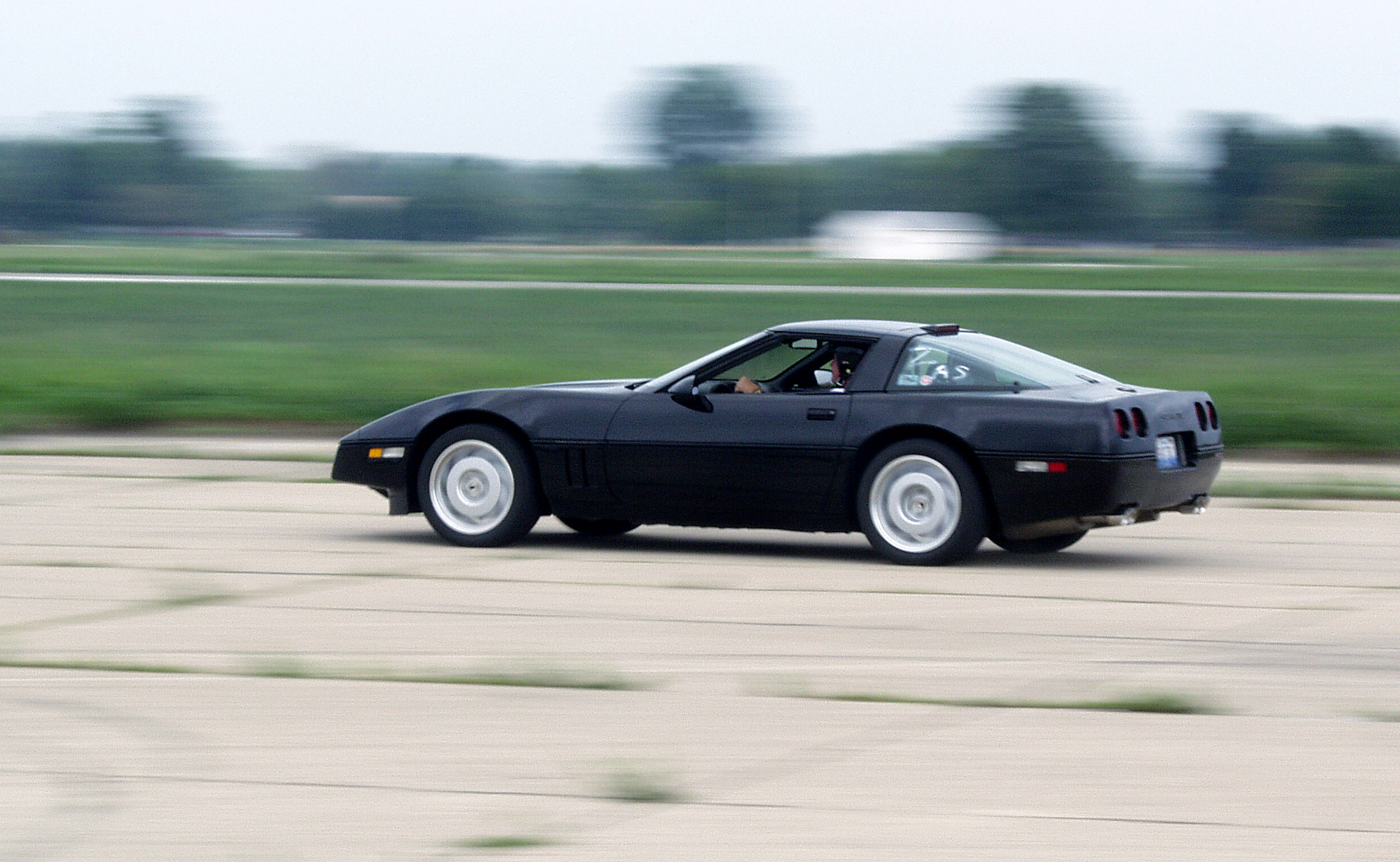
9. **Corvette C4 ZR1**: For years, the Corvette C4 ZR1 navigated the classic car landscape as something of a “hidden gem,” often considered the least desirable of the Corvette family. However, this perception has undergone a dramatic shift, with the C4 ZR1 now rapidly catching the attention of astute collectors and performance enthusiasts alike. Its distinct engineering and undeniable capabilities are finally receiving their due appreciation, elevating its status within the Corvette lineage.
What truly distinguishes the C4 ZR1 is its formidable LT1 engine and the cutting-edge performance it delivered for its era. This powerhouse allowed the ZR1 to push the boundaries of what was expected from an American sports car, offering a level of sophistication and raw power that surprised many contemporaries. It represented a significant technological leap for the Corvette marque, particularly during the late 1980s and early 1990s, defining a new standard for American performance.
Beyond its mechanical prowess, the C4 ZR1’s sleek, aggressive styling also contributed to its allure. It maintained the distinctive Corvette silhouette while incorporating subtle enhancements that hinted at its increased performance capabilities. This combination of groundbreaking engine technology and purposeful design made it a significant statement in the sports car world, foreshadowing future Corvette innovations and securing its place as a visually striking machine.
The market has clearly responded to the C4 ZR1’s rediscovery, with its value “steadily increasing” as demand for these once-overlooked “hidden gems grows.” Collectors are recognizing its inherent value, not just as a piece of Corvette history, but as a robust performance machine that offers substantial investment potential. As interest in powerful 1980s and 1990s performance cars intensifies, the C4 ZR1 is poised for continued strong appreciation and collectibility.
Car Model Information: 2024 Volvo XC90 B6 Ultimate Bright Theme 6-Seater
Name: Chevrolet Corvette (C4)
Caption: 1994 Chevrolet Corvette
Manufacturer: Chevrolet
Production: January 3, 1983 – June 20, 1996
ModelYears: 1984–1996
Predecessor: Chevrolet Corvette (C3)
Successor: Chevrolet Corvette (C5)
Class: Sports car
Assembly: Bowling Green, Kentucky
BodyStyle: targa top,Convertible (car)
Layout: Front-engine, rear-wheel-drive layout#FMR
Platform: GM Y platform
Wheelbase: cvt
Length: cvt
Width: cvt
Height: Coupe: {{cvt,46.7,in,mm
Transmission: automatic transmission,Overdrive (mechanics),GM 4L60-E transmission,ZF Friedrichshafen
Engine: {{cvt,350,cuin,L,1,Chevrolet small-block engine (first- and second-generation)#L83
Weight: cvt
Designer: Jerry Palmer
Related: Callaway Cars#C4 (RPO B2K Callaway Twin Turbo Corvette),Callaway Cars#C4 (RPO B2K Callaway Twin Turbo Corvette),Callaway Cars#C4 (RPO B2K Callaway Twin Turbo Corvette),Callaway Cars#C6 (Callaway SuperNatural Corvette),Callaway Cars#C4 (RPO B2K Callaway Twin Turbo Corvette)
Categories: 1990s cars, All articles with dead external links, All articles with unsourced statements, Articles with dead external links from November 2016, Articles with permanently dead external links
Summary: The Chevrolet Corvette (C4) is the fourth generation of the Corvette sports car, produced by American automobile manufacturer Chevrolet from 1983 until 1996. The convertible returned, as did higher performance engines, exemplified by the 375 hp (280 kW) LT5 found in the ZR1. In early March 1990, the ZR1 would set new records for the highest average speed over 24 hours at over 175 mph (282 km/h) and highest average speed over 5,000 miles at over 173 mph (278 km/h). With a completely new chassis, modern sleeker styling, and other improvements to the model, prices rose and sales declined. The last C4 was produced on June 20, 1996.
Get more information about: Chevrolet Corvette (C4)
Buying a high-performing used car >>>
Brand: Corvette Model: C4 ZR1
Price: $51,649 Mileage: 13,060 mi.
Read more about: The Blink and You Missed It: 10 Iconic Pop-Up Headlights That Vanished From Car Design
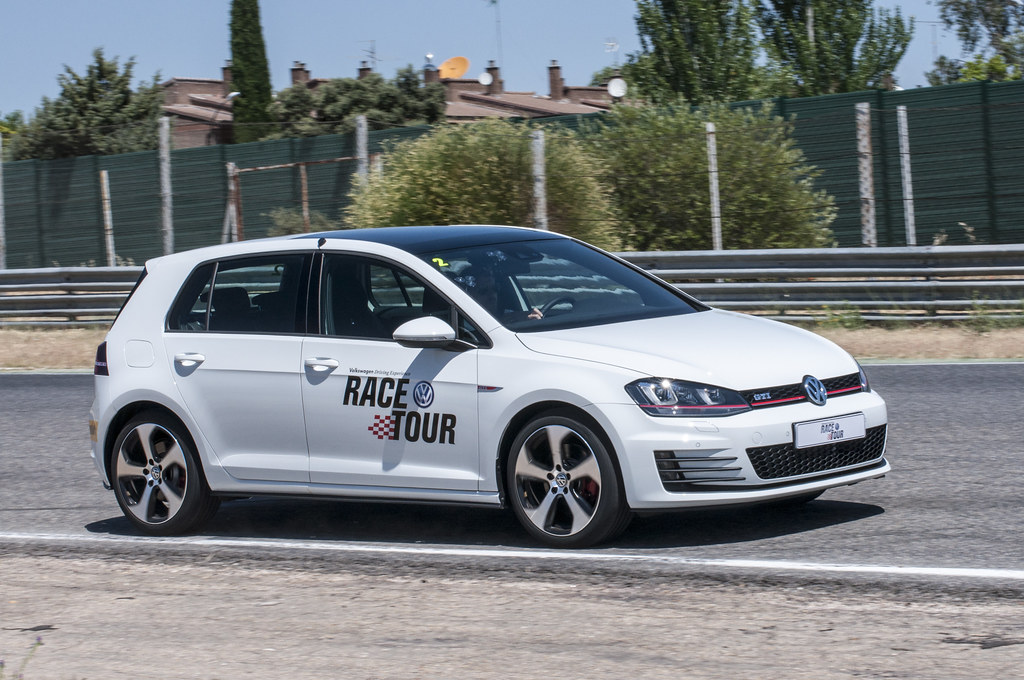
10. **Volkswagen Golf GTI**: The Volkswagen Golf GTI holds a storied place in automotive history, widely regarded as “one of the first hot hatches that made hatchback cars cool.” This trailblazing compact car didn’t just set a new standard; it fundamentally redefined expectations for practical, everyday vehicles, injecting them with a thrilling dose of performance and driving excitement that captivated a global audience.
The genius of the Golf GTI lay in its simple yet profoundly effective engineering. It combined a lightweight chassis with a spirited engine and finely tuned suspension, creating a car that was incredibly “fun-to-drive.” Its agile handling and responsive nature made it a joy on twisty roads, while its compact dimensions and practical hatchback design ensured it remained an ideal daily driver, perfectly blending utility with exhilarating performance.
The GTI’s influence extended far beyond its immediate sales success; it “set the standard for future compact performance cars,” inspiring a generation of ‘hot hatch’ imitators. Its legacy is etched into the very fabric of affordable performance motoring, proving that exciting driving experiences weren’t exclusive to expensive sports cars. This profound cultural significance is a crucial element of its enduring collectibility and market strength.
Today, the market reflects the Golf GTI’s enduring “importance in automotive history,” with its “rising value” signaling a growing appreciation for these iconic machines. Clean, original examples are increasingly sought after by collectors who recognize not just its historical impact, but also the pure, unadulterated driving pleasure it still offers. For many, owning a Golf GTI is owning a piece of automotive revolution, and its value trajectory continues to climb significantly.
Car Model Information: 2024 Volvo XC90 B6 Ultimate Bright Theme 6-Seater
Name: Volkswagen Golf
Caption: Volkswagen Golf Mk8
Manufacturer: Volkswagen
Production: 1974–present
Class: Compact car
Predecessor: Volkswagen Beetle
Successor: Volkswagen ID.3
Alt: grey car (hatchback)
Categories: 1980s cars, 1990s cars, 2000s cars, 2010s cars, 2020s cars
Summary: The Volkswagen Golf () is a compact car/small family car (C-segment) produced by the German automotive manufacturer Volkswagen since 1974, marketed worldwide across eight generations, in various body configurations and under various nameplates – including as the Volkswagen Rabbit in the United States and Canada (Mk1 and Mk5), and as the Volkswagen Caribe in Mexico (Mk1).
The original Golf Mk1 was a front-engined, front-wheel drive replacement for the air-cooled, rear-engined, rear-wheel drive Volkswagen Beetle. Historically, the Golf is Volkswagen’s best-selling model and is among the world’s top three best-selling models, with more than 35 million units sold as of 2019.
Initially, most Golfs were hatchbacks, with the three-door version being somewhat more popular than the five-door. Other variants include an estate (Variant, from 1993), convertible (Cabriolet or Cabrio, from 1979), and a Golf-based saloon called the Jetta, Vento (from 1992), or Bora (from 1999). The Golf covers economy to high-performance market segments.
The Golf has won awards, including the World Car of the Year in 2009, with the Mk6 and in 2013 with the Mk7. Along with the Renault Clio and the Vauxhall Astra, the Golf is one of only three cars to have won European Car of the Year twice, in 1992 and 2013. The Golf has made the annual Car and Driver 10Best list multiple times. The Mk7 won the Motor Trend Car of the Year award in 2015, and the Mk1 GTI also won the award in 1985. The Mk4 won for the best-selling car in Europe in 2001.
Get more information about: Volkswagen Golf
Buying a high-performing used car >>>
Brand: Volkswagen Model: Golf GTI
Price: $51,649 Mileage: 13,060 mi.
Read more about: Beyond the Bling: 15 Billionaires Who Drive Modest Cars and the Frugal Philosophy Fueling Their Empires
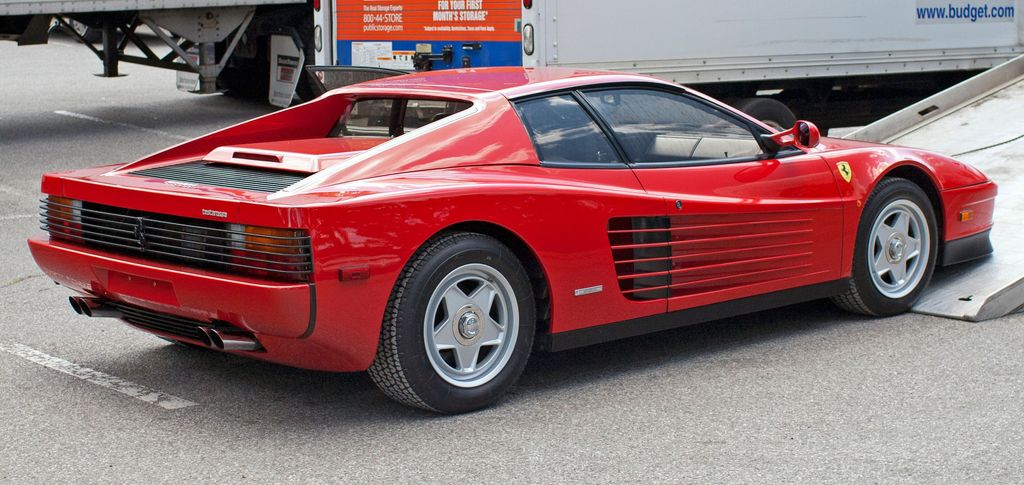
11. **Ferrari Testarossa**: When one conjures images of 1980s supercar extravagance, the Ferrari Testarossa immediately springs to mind, standing as “one of the most well-known sports cars of the ’80s and ’90s.” Its sheer presence, with a bold design and those instantly recognizable “iconic cheesegrater side intakes,” ensured it was a machine that commanded attention and firmly set itself apart from other supercars of the era.
The Testarossa was more than just a car; it was a cultural icon, frequently gracing movie screens, music videos, and bedroom posters, solidifying its status as a quintessential dream car for an entire generation. Its wide, muscular stance and distinctive horizontally-opposed 12-cylinder engine contributed to a legendary aura that has only grown stronger with time, symbolizing an era of unbridled automotive ambition and design.
Beneath its striking coachwork, the Testarossa delivered a potent performance experience befitting its Ferrari badge. While the emphasis was often on its visual drama, the flat-12 engine provided thrilling acceleration and a sonorous soundtrack, creating an immersive driving experience that remains exhilarating today. Its engineering and design were a pure expression of Italian automotive artistry, blending form and function seamlessly.
Today, as more enthusiasts “attempt to purchase their dream cars” from this influential period, the Testarossa’s value has been “steadily increasing and is expected to continue rising.” Its blend of undeniable cinematic appeal, groundbreaking design, and genuine supercar performance makes it a highly desirable asset in the classic car market, a true blue-chip investment for collectors seeking an icon that embodies a golden age of motoring.
Car Model Information: 1987 Ferrari Testarossa
Name: Ferrari Testarossa, 512 TR and F512 M
Manufacturer: Ferrari
Production: 1984–1996,9,939 produced
Assembly: Maranello
Predecessor: Ferrari Berlinetta Boxer
Successor: Ferrari 550
Class: Sports car,Grand tourer
BodyStyle: berlinetta
Layout: Rear mid-engine, rear-wheel-drive layout
Engine: Ferrari flat-12 engine,Flat-12 engine
Transmission: Manual transmission
Designer: Leonardo Fioravanti (engineer)
Categories: 1990s cars, All articles with dead external links, All articles with unsourced statements, Articles containing Latin-language text, Articles with dead external links from February 2018
Summary: The Ferrari Testarossa (Type F110) is a 12-cylinder mid-engine sports car manufactured by Ferrari, which went into production in 1984 as the successor to the Ferrari Berlinetta Boxer. The Pininfarina-designed car was originally produced from 1984 until 1991, with two model revisions following the end of Testarossa production called the 512 TR and F512 M, which were produced from 1992 until 1996. Including revised variations, almost 10,000 cars in total were produced, making it at the time one of the most mass-produced Ferrari models.
The Testarossa is a two-door coupé that premiered at the 1984 Paris Auto Show. All versions of the Testarossa were available with a rear-mounted, five-speed manual transmission. The rear mid-engine design (engine between the axles but behind the cabin) keeps the centre of gravity in the middle of the car, which increases stability and improves the car’s cornering ability, and thus results in a standing weight distribution of 40% front: 60% rear.
The original Testarossa was re-engineered for the 1992 model year and was introduced as the 512 TR (TR meaning TestaRossa), at the Los Angeles Auto Show, effectively as a completely new car, and an improved weight distribution of 41% front, 59% rear. Another new variant called the F512 M was introduced at the 1994 Paris Auto Show. The car dropped the TR initials and added the M which in Italian stood for modificata, or translated to modified, and was the final version of the Testarossa, which continued its predecessor’s weight distribution improvement of 42% front, 58% rear. The F512 M was Ferrari’s last vehicle that featured the flat-12 engine.
The Testarossa is a recognized cultural icon of the 1980s, and was popularized by media including the 1984 television series Miami Vice (from the 1986 season onward) and Sega’s 1986 video game Out Run.
Get more information about: Ferrari Testarossa
Buying a high-performing used car >>>
Brand: Ferrari Model: Testarossa
Price: $139,800 Mileage: 0 mi.
Read more about: The Blink and You Missed It: 10 Iconic Pop-Up Headlights That Vanished From Car Design
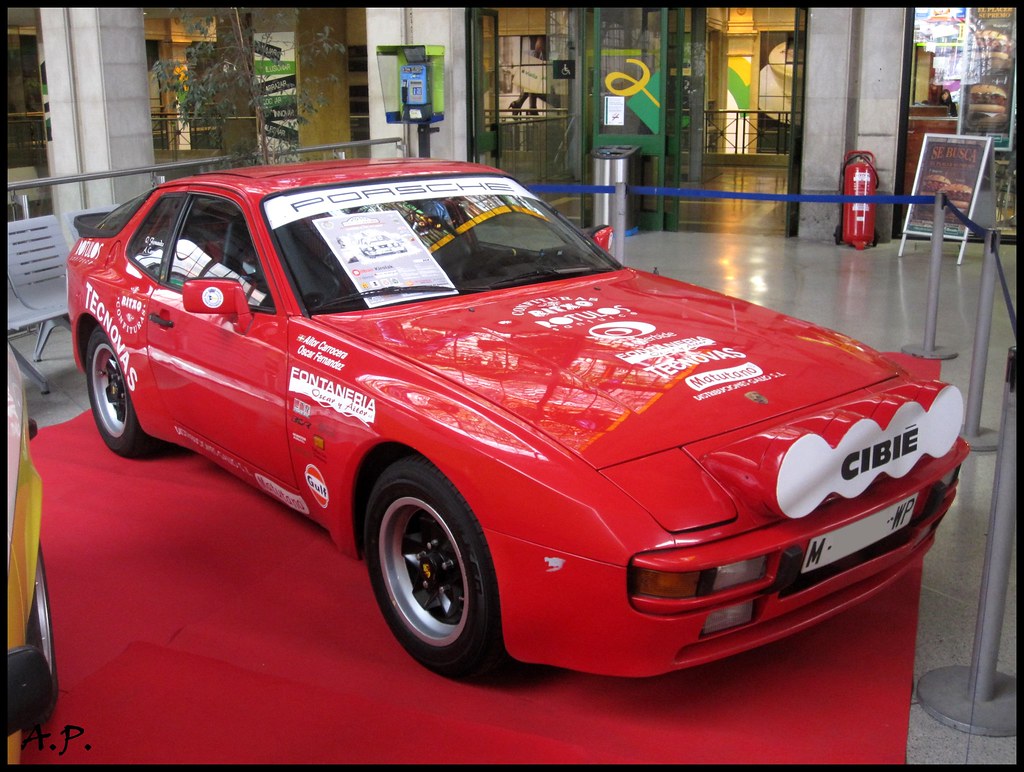
12. **Porsche 944 Turbo**: For a considerable period, the Porsche 944 found itself somewhat “overshadowed by its 911 siblings,” residing in a different tier of collector desirability. However, the tide has definitively turned, with discerning collectors now “recognizing its balance, power, and rarity—especially the Turbo versions.” This front-engined, transaxle Porsche is carving out its own significant niche in the appreciating classic market, proving its unique value proposition.
The 944 Turbo was a marvel of ’80s engineering, delivering a sophisticated driving experience characterized by superb balance and impressive power. Its near 50/50 weight distribution, a direct benefit of the transaxle layout, provided exceptional handling dynamics that were often more forgiving than its rear-engined counterparts. This inherent chassis competence, combined with a potent turbocharged engine, offered genuine sports car thrills.
Under the hood, the turbocharged 2.5-liter four-cylinder engine was a gem, offering robust acceleration and a distinctive power delivery characteristic of forced induction of that era. This powerplant, coupled with Porsche’s renowned build quality and attention to detail, made the 944 Turbo a formidable performer on both road and track, a true driver’s car that embodied the ’80s performance aesthetic with precision and reliability.
The market for the 944 Turbo is now experiencing “strong appreciation,” driven by a growing understanding of its capabilities and its distinct “’80s vibes.” It represents a fantastic opportunity for collectors seeking a powerful and balanced German classic. Its rarity, especially for well-maintained examples, further enhances its allure, contributing to its upward trajectory in value as collectors seek out these distinctive models.
While it offers significant investment potential, prospective buyers should note that “service history and working electronics are crucial—944s are expensive to repair.” Nonetheless, well-documented, meticulously maintained examples are proving to be exceptionally rewarding acquisitions. Its unique position as a powerful, balanced, and now rare Porsche from the era solidifies its investment trajectory and status as a highly desirable classic.
Car Model Information: 2024 Volvo XC90 B6 Ultimate Bright Theme 6-Seater
Caption: 1986 944 Turbo (951) US-spec
Name: Porsche 944
Manufacturer: Porsche AG
Class: Sports car
Production: 1982–1991
Layout: Front-engine, rear-wheel-drive layout
Assembly: Neckarsulm,Stuttgart
Designer: Harm Lagaay
Predecessor: Porsche 924
Successor: Porsche 968
BodyStyle: coupé,convertible
Engine: Straight-four engine,Turbocharger,2.7 L M44/12 I4,3.0 L M44/41 I4
Wheelbase: 2400 mm
Abbr: on
Length: 1986–1988: {{convert,4318,mm,in,1,abbr=on
Width: 1735 mm
Height: 1275 mm
Transmission: Automatic transmission,Manual transmission
Weight: Pre-1988: {{convert,1180,kg,lb,0,abbr=on
Categories: 1990s cars, All articles needing additional references, All articles with unsourced statements, Articles needing additional references from September 2024, Articles with short description
Summary: The Porsche 944 is a sports car which was manufactured by the German company Porsche from 1982 until 1991. A front-engine, rear-wheel drive model based on the platform of the 924, the 944 was available in coupé or cabriolet body styles, with either naturally aspirated or turbocharged engines. With over 163,000 cars produced, the 944 was the most successful sports car in Porsche’s history until the introductions of the Boxster and 997 Carrera.
Extensive design revisions for the 1992 model year prompted Porsche to drop the 944 nameplate and rebrand the vehicle as the 968.
Get more information about: Porsche 944
Buying a high-performing used car >>>
Brand: Porsche Model: 944 Turbo
Price: $51,649 Mileage: 13,060 mi.
Read more about: Ignored No More: Unearthing the 16 Most Underrated Foreign Classic Cars of the 1990s
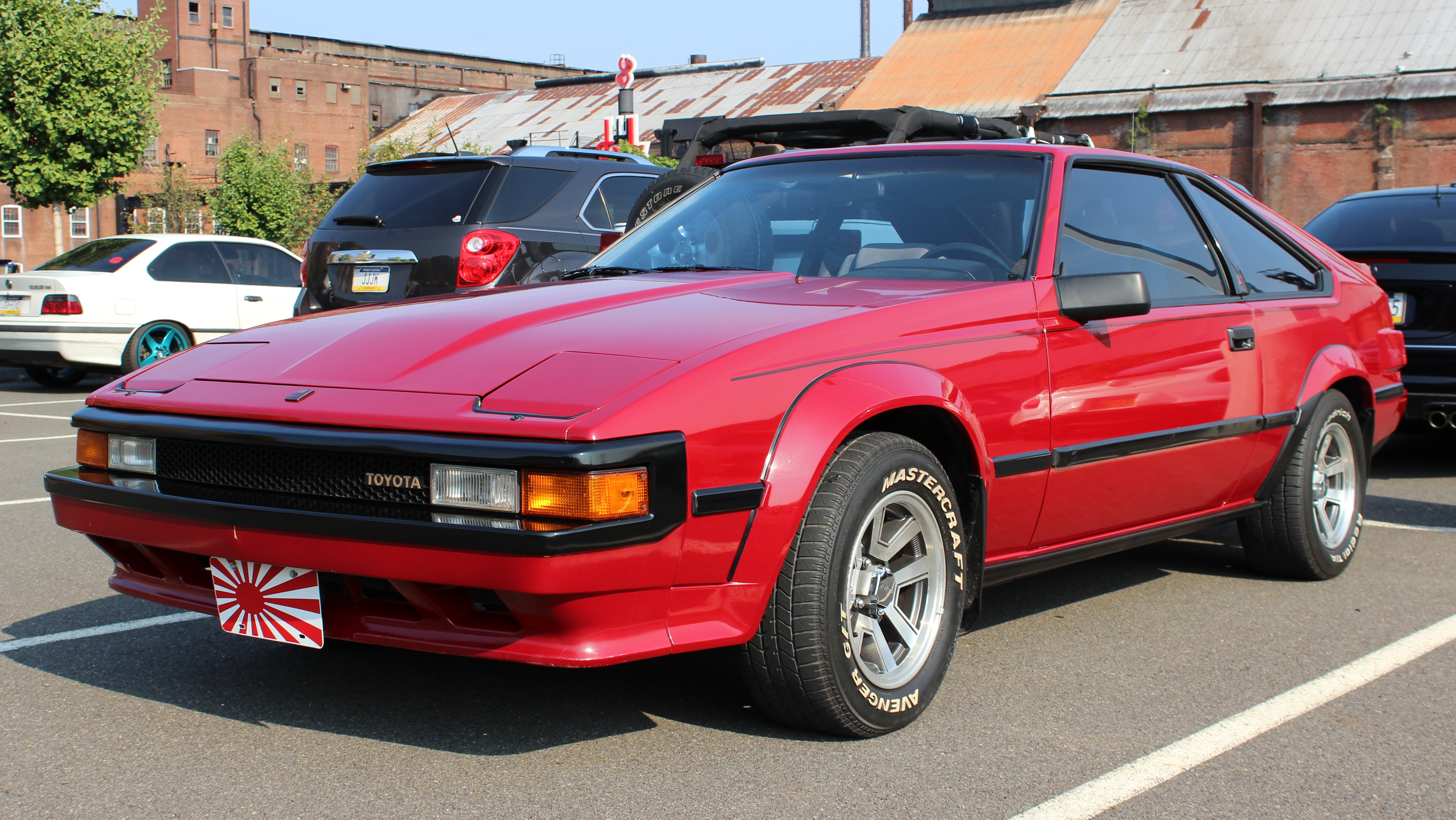
13. **Toyota Celica Supra (Mk2)**: The second-generation Toyota Celica Supra, produced between 1981 and 1985, stands as a prime example of an “early Supra generation” that is now experiencing a well-deserved surge in collector interest. This particular iteration masterfully “blends retro ‘80s design with respectable performance and Toyota reliability,” creating a compelling package that resonates with a growing segment of classic car enthusiasts.
The Mk2 Supra’s design is undeniably rooted in the ’80s, featuring sharp, angular lines, pop-up headlights, and a distinctive long hood that exuded a sporty yet elegant aesthetic. It was offered in various trims, with the more performance-oriented P-Type models distinguished by their flared fenders and more aggressive styling. This design language has aged gracefully, now celebrated as a hallmark of its era and a testament to its timeless appeal.
Mechanically, the Celica Supra delivered on its sporty promise. It was powered by a range of smooth and robust inline-six engines that provided “respectable performance” for the time. Coupled with Toyota’s legendary reliability, these engines ensured a dependable and engaging driving experience, making the Mk2 Supra a versatile vehicle capable of both spirited drives and comfortable daily use, a true testament to Japanese engineering.
Significantly, the Mk2 Supra is often “rarer than Mk3/Mk4 Supras” in pristine condition, a factor that is now contributing to its escalating value as it is “finally getting attention” from the collector community. This scarcity, combined with its distinct styling and performance, makes it a highly sought-after model for those appreciating vintage Japanese sports cars.
Enthusiasts actively seek out models with desirable features; “sunroof and P-Type (Performance) models with flared fenders are more valuable,” indicating a clear demand for specific configurations that enhance its appeal and market standing. Its unique combination of ’80s charm, Japanese engineering, and relative scarcity positions it as a very smart investment in today’s classic market, promising continued appreciation.
Car Model Information: 2024 Volvo XC90 B6 Ultimate Bright Theme 6-Seater
Name: Toyota Supra
Caption: Toyota GR Supra (J29/DB)
Manufacturer: Toyota
Aka: unbulleted list
Production: unbulleted list
Class: Sports car
BodyStyle: fastback,coupé
Layout: Front-engine, rear-wheel-drive layout
Predecessor: Toyota Celica (A20)
Categories: 1980s cars, 1990s cars, 2000s cars, 2010s cars, 2020s cars
Summary: The Toyota Supra (Japanese: トヨタ・スープラ, Hepburn: Toyota Sūpura) is a sports car and grand tourer manufactured and developed by the Toyota Motor Corporation beginning in 1978. The name “supra” is a definition from the Latin prefix, meaning “above”, “to surpass” or “go beyond”.
The initial four generations of the Supra were produced from 1978 to 2002. The fifth generation has been produced since March 2019 and later went on sale in May 2019. The styling of the original Supra was derived from the Toyota Celica, but it was longer. Starting in mid-1986, the A70 Supra became a separate model from the Celica. In turn, Toyota also stopped using the prefix Celica and named the car Supra. Owing to the similarity and past of the Celica’s name, it is frequently mistaken for the Supra, and vice versa. The first, second and third generations of the Supra were assembled at the Tahara plant in Tahara, Aichi, while the fourth generation was assembled at the Motomachi plant in Toyota City. The 5th generation of the Supra is assembled alongside the G29 BMW Z4 in Graz, Austria by Magna Steyr.
The Supra traces much of its roots back to the 2000GT owing to an inline-6 layout. The first three generations were offered with a direct descendant to the Crown’s and 2000GT’s M engine. Interior aspects were also similar, as was the chassis code “A”. Along with this name, Toyota also included its own logo for the Supra. It was derived from the original Celica logo, being blue instead of orange. This logo was used until January 1986, when the A70 Supra was introduced. The new logo was similar in size, with orange writing on a red background, but without the dragon design. That logo, in turn, was on Supras until 1991 when Toyota switched to its current oval company logo. The dragon logo was a Celica logo regardless of what colour it was. It appeared on the first two generations of the Supra because they were officially Toyota Celicas. The dragon logo was used for the Celica line until it was also discontinued.
In 1998, Toyota ceased sales of the fourth-generation Supra in the United States. Production of the fourth-generation Supra for worldwide markets ended in 2002. In January 2019, the fifth-generation Supra, which was co-developed with the G29 BMW Z4, was introduced.
Get more information about: Toyota Supra
Buying a high-performing used car >>>
Brand: Toyota Model: Celica Supra
Price: $51,649 Mileage: 13,060 mi.
As our journey through the appreciating classics of the 1980s concludes, it’s clear that this vibrant decade continues to captivate the automotive world. From revered sports cars that challenged the status quo to hot hatches that redefined everyday performance, these machines are more than just relics; they are tangible investments. Their rising values underscore a collective recognition of their historical significance, innovative engineering, and undeniable emotional pull. For those with a keen eye and a passion for the cars that shaped an era, the 1980s continue to offer a thrilling landscape of rewarding opportunities. Whether you’re a seasoned collector or an aspiring enthusiast, securing one of these iconic vehicles now could mean holding a true goldmine for the future.

